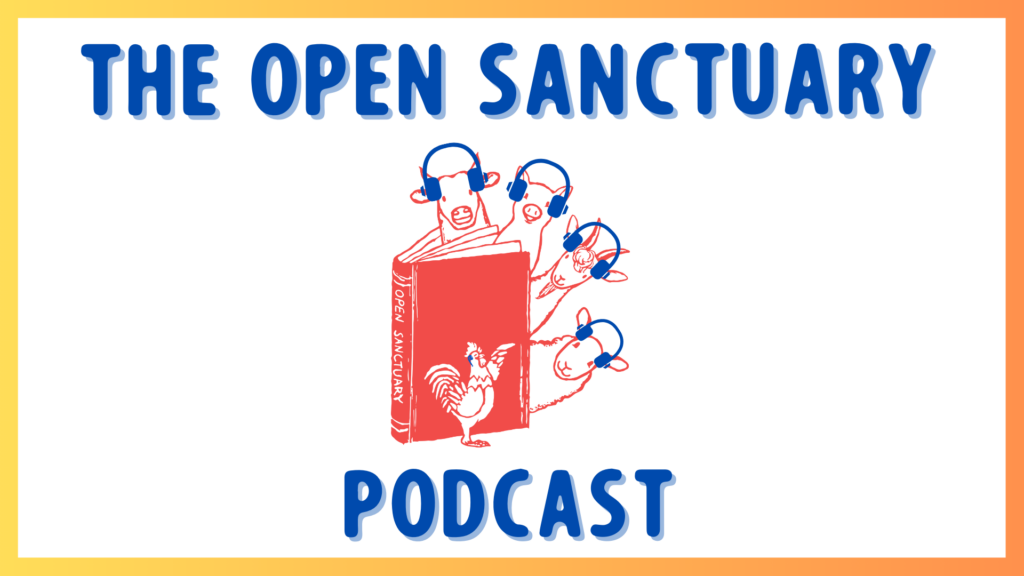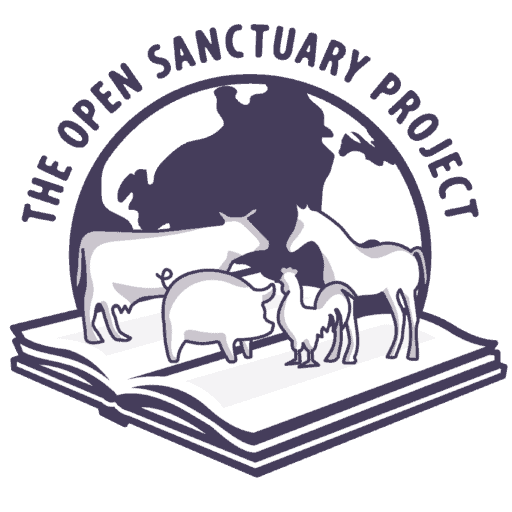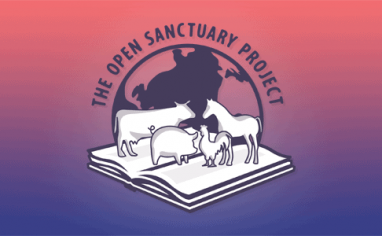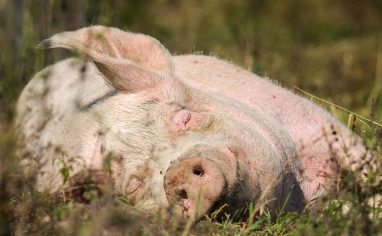
Subscribe To The Open Sanctuary Podcast
If you’d like to get the latest episodes of The Open Sanctuary Podcast, you can subscribe for free on all Podcast platforms, including Apple Podcasts and Spotify!
Episode Notes
At The Open Sanctuary Project, we not only advocate for compassionate animal care, but also for thoughtful and well-considered governance practices. We believe combining these two elements can help with long-term sanctuary sustainability! In this episode, our NonprofitA non-governmental organization whose primary purpose is something other than selling goods or services. Specialist Julia chats with Community Education Specialist Andie, and Research Specialist Amber about some of the many variables when considering starting a nonprofit sanctuary or rescue for animals. We hope this discussion will help movement newcomers and existing organizations closely examine the basics of organizational governance and guide them toward the structures that may be the best fit for their work!
—
This Episode’s Referenced Open Sanctuary Project Resources:
- So, You Want To Start A Farmed Animal Sanctuary
- Weighing The Costs And Benefits Of Nonprofit Status
- Understanding Mission And Vision Statements For Your Animal Organization
- Accuracy And Transparency: Two Critical Responsibilities Of Your Farmed Animal Sanctuary
- Understanding Your Animal Sanctuary’s Zoning Rights & Restrictions
- Nonprofit Board Basics For Animal Sanctuaries
Episode Transcript (Auto-GeneratedThe following content was transcribed through an automated process and may contain transcription errors or misspellings.)
Julia Magnus: Hi, I’m Julia Magnus. I’m the nonprofit specialist for the Open Sanctuary Project and I’m delighted to be here talking today with Amber Barnes who’s the research specialist and Andie Springirth who is the education specialist. And so here we are today to talk about one of the most frequent questions we get asked at the Open Sanctuary Project. I would say almost weekly we get a question along the lines of, “I would like to start an animal sanctuary. I would like to start an animal rescueAn organization that helps secure animals from dangerous or unacceptable situations. As organizations, rescues may or may not have dedicated permanent infrastructure for housing animals.. How do I go about this?” And honestly, I find it pretty delightful because it’s moving to know that folks are really interested in providing additional safe homes and compassionate care for animals in need because we all know that there’s an endless need for that. When it comes to that, we do offer a great number of resources that are addressing the questions that you want to start considering when you’re starting a farmed animal sanctuaryAn animal sanctuary that primarily cares for rescued animals that were farmed by humans. or when you’re starting in on this work. But Amber, I want to ask you something in particular because we recently dealt with a request like this and it feels like there is one really important thing that you should do before you start your own sanctuary. And I see you nodding. So I’d love to hear because I know what you’re going to say and I want to hear you say it because you say it so well.
Amber Barnes: Okay. Yeah, I’m happy to say it. One really important part I would say for everyone who wants to start an animal sanctuary, animal rescue, is to do a little research and find out what other animal sanctuaries exist. And volunteer with them and volunteer with them for a good amount of time because they’re going to be able to tell you the best, particularly if they’re in your region, some of the things that they’ve had to deal with, some of the things, you know, obstacles, maybe like legal or even environmental things like this. They’re going to have, you’ll have shared obstacles and also hopefully shared joys. And also on that note too is like you might actually find that you can do a lot to just support the existing ones once you get into it. But if not, then you’ll have all this experience of really what it is day-to-day, what it really entails and it will set you up so well for actually starting a sanctuary. That’s my number one recommendation.
Julia Magnus: Amber, thank you so much. I totally agree with you. I feel like there are so many lovely people out there who have great big hearts and great big ideas. And once you are on the ground and you start working with other sanctuaries, with other existing organizations, you can get a better picture of the constraints, the limitations, the stresses and also maybe get an idea of what needs are out there in your own specific community. For example, if your local community has sanctuaries that are focused specifically on pigs and chickens, you might decide that you would do well to focus in another area or maybe branch out to another sanctuary, do a longer term visit to another sanctuary that might focus on goats. So you could address those kinds of issues in your community and create the breadth and depth within your community that it may need. Andie, you know, I know that you live with a number of farmed animalsA species or specific breed of animal that is raised by humans for the use of their bodies or what comes from their bodies. as well as a lot of other rescued animals. So, when you started doing rescue and you started working with animals, did it ever occur to you to start your own nonprofit or how did you get started with it?
Andie Springirth: Such a great question, Julia. To be completely honest and transparent, no, it did not. It may be a little embarrassing to say out loud, but I want to be honest with everybody because I think that this is probably something that’s shared among other folks is that growing up with a lot of animals in my childhood in my house, it was just kind of a part of the way that we lived. And those were of course growing up there were more traditional companion animalsAnimals who spend regular time with humans in their home and life. Typically cats and dogs are considered companion animals, though many species of animals could also be companion animals. like cats, hamsters, animals like that. But, as I got involved in sanctuary work and wildlife rescue work, this certainly did come up. It popped up to my head. I thought, “Wow, those vet bills are getting pretty expensive here. It would be nice to think about ways of funding this that wasn’t just necessarily coming directly from my own pocket.” With that said, I do want to say thanks to your brilliant work here at the Open Sanctuary Project and the wonderful resources that you’ve written on this topic, I’ve learned a lot about the ways that you can either be an incorporated nonprofit or a grassroots organization and in both of those formats fundraise for your rescues and your sanctuary residents. That doesn’t necessarily entail the formal process, which has been really eye opening for me because one of the questions I actually had for a long time was, well, of course this has to be funded from my own pocket if I’m not incorporated, it would be illegal to collect donations, right? Which is not necessarily the case. And it was something that I learned a lot more about in some of your resources that, from an administrative standpoint as a grassroots organization, you certainly can fundraise. Paperwork. There can be paperwork involved. I know depending on your state and your jurisdiction, but yeah, I may have gone a little bit off on a tangent there, but initially, no, it did not dawn on me. Certainly now, in the last few years, it has and would be something to consider. Certainly.
Julia Magnus: That’s pretty amazing because I do think that in a lot of cases I, similar to you, I grew up in a household full of animals and I do rescue work in Chicago and our rescue work is all grassroots based. We have not started a nonprofit. We do work with nonprofitsNon-governmental organizations whose primary purpose is something other than selling goods or services.. For our particular group, the fit and the dynamics are such that it feels really good to stay grassroots. It allows us to be a little bit more dynamic and responsive because one of our specialties is responding to cockfighting busts and in those cases you have to work very quickly and make decisions very fast which may be more difficult depending on how you structure your nonprofit organization if you do have a nonprofit. When I’m thinking about this, what’s interesting that you said to me Andie was the question of funding. It feels to me like a lot of folks when they’re thinking about starting a nonprofit, their focus around it is if I get a 501c3 organization, then I can raise more funds. And I don’t know that that is necessarily always the case. I think there are a ton of benefits to having a 501c3. One of them is that it imposes structure and scheduling and accuracy and transparency requirements on your organization which are valuable and important. It doesn’t necessarily mean that you’re going to get funding off the get-go. Both of you, I know, have worked for large nonprofits and both of you have worked in grassroots contexts and specifically in your own rescue work. How does it feel different to you both from an administrative structure standpoint, from an accountability standpoint and from a standpoint of being able to outreachAn activity or campaign to share information with the public or a specific group. Typically used in reference to an organization’s efforts to share their mission. to the community. I’ll just jump in a little bit.
Amber Barnes: I’m really trying to think about that. It’s what I would say is that when I have worked as a caregiverSomeone who provides daily care, specifically for animal residents at an animal sanctuary, shelter, or rescue. at larger nonprofits, there was more structure and because of that structure on one hand, it actually made some things easier, right? Because everyone kind of knew their part of what they were doing here and there and there was usually someone in particular that wasn’t me taking care of the aspects of the administrative aspects that could be overwhelming. So, I mean, I really appreciated that. I also as someone who’s also consulted before for a foundation that provides grants to animal non-human animal organizations that sometimes the nonprofit aspect is important to them. It’s also a write-off for taxes and I don’t know the situation with that. Generally speaking, I know through the foundation they couldn’t write something off on their taxes if it wasn’t a nonprofit. So that is something I also know on the flip side of that on my own, kind of rescue work, there is a sense of freedom. The structure is so nice, but also the freedom is also a nice space, too. So, it really depends on where you’re at, what you’re dealing with and what you want to do. The ability to make those decisions. It’s good, to have not to be all alone in that, right? But that, it’s nice to have a little community that’s like helping, has the same kind of ideas. So you do have some accountability with that, but you have much more freedom to just act when there’s something to do and there’s a lot less levels that have to be gone through before you can act on something. On the flip side that can really protect you and protect others and, you know, there’s good things about that structure but also there could be really nice things about that grassroots. I think it can be faster sometimes and there’s a sense of community I feel there that’s really special.
Andie Springirth: Yeah. I want to kind of go a little bit off of what Amber mentioned there at the end and just say that I think from a grassroots perspective, it tends to be less hierarchical in terms of structure for obvious reasons. If you already are an incorporated nonprofit, you’ll know exactly what we’re talking about. And as Amber and Julia have mentioned, yes, there are protections that come with that structure, but at the same time. I think it leaves out a collective decision-making process that can be really beneficial not just for the staff and the folks working with your group and organization but also for your residents potentially, right? When you have a more circular way of making decisions and coming to agreements, community agreements on various issues that come up in rescue work. So, I would say yeah, that’s probably one of the biggest benefits in my opinion, from a grassroots perspective. But I do also want to just say, pose the question to folks, if you are incorporated, as a 501c3, and you continue to want to be incorporated for various reasons of the benefits that come with that, maybe ask yourselves and your team, what are, if we find these protections necessary, this structure necessary, but we also would like, we also really find the grassroots thing attractive. In what ways can we incorporate some of these grassroots values, right, into our incorporated nonprofit or 501c3? I encourage folks to explore that because that opens up a lot of possibilities. Yeah. For nonprofits.
Julia Magnus: I totally agree. I think that there are definite costs and benefits on both sides of either going 501c3 or staying grassroots. We do have a comprehensive resource that addresses both the costs and benefits on both sides. If you look up nonprofit costs and benefits at opensanctuary.org, you’ll find that resource and it’ll run you through a lot of the elements that are involved. For example, yes, when you are 501c3 nonprofit, you’re much more likely able to apply for grants and successfully receive them. Unless you have a fiscal sponsor, which is an entirely different subject, but you are much more likely to attract grants, there may be a greater sense of legitimacy from the public with regards to your existence. I have had people tell me that my rescue work was not legitimate because it was not a 501c3, which is not true. So, I want to give a major shout out to the grassroots rescue work that goes on on a day-to-day basis and make sure that those folks know that their work is in fact legitimate, but there is that perception out there. Yes, grassroots can be more dynamic, more quick to adapt and your structure may be more flexible and adaptable depending on the needs and desires of the folks in your group. You can have different kinds of structures, but there is also with nonprofits, not necessarily constraints around adapting new kinds of structures that may work for an animal sanctuary or animal rescue context better than maybe traditional structures. So, one of the things we talked about at some length from the very beginning of my work with Open Sanctuary Project was the question of missionThe stated goals and activities of an organization. An animal sanctuary’s mission is commonly focused on objectives such as animal rescue and public advocacy. and vision. We do also have a resource on that. You can search mission vision at opensanctuary.org. But I’d love to hear what both of you think about mission and vision. My take, my hot take is every group, regardless of nonprofit status or not, should do the internal work to develop their own mission and vision statements, but I’d love to hear what you think about them and the value of them.
Andie Springirth: Yeah. Yeah. I have a brief comment on that. I mean, I want to emphasize Julia‘s hot take on that. I want to echo it because I think it’s imperative for, regardless of what structure you are, what kind of organization you are to have a coherent, agreed upon mission and vision. I think this is the compass with which your organization derives its key values, its activities, its processes and systems that it has in place. Having a mission vision does not mean that it’s set in stone, right? All those things can always evolve. And they, they probably should evolve as time goes on. Yeah, they are just, they are wonderful guides. They also can be really helpful in terms of, you know, who you attract to your organization, who is attracted to your organization and, whether their values align with your organization’s values and if they find that joining your work is going to be mutually beneficial. So, yeah, just want to echo that.
Amber Barnes: I totally agree with everything that’s been said so far for sure and want to pump that up but also two things that come to mind for me when it comes to mission and vision. And one of these is when you take time to sit and discuss and really plan out a mission, a vision, you are also protecting yourself a little bit, your hearts, I feel like. It is so hard, everyone knows if you’re in sanctuary work one of the hardest things is saying no and when you come together in the beginning and you really when you’re choosing that mission, it may seem like, “Oh well, I just want to help everyone,” that’s wonderful of course you do. But also being able to focus in on a realistic and, you know, where your strengths are, you know where that focus is and coming up with one that really fits for you and your organization whether it’s grassroots or nonprofit. You can still have this mission is it helps you later on when somebody’s, you know, like, “Please, can you take in this individual?” And you have so many things you have to go through when you make that decision anyway. But when you can say no, like I, you know, policy like I really can’t because if I do that then I’m veering off our mission and if I’m veering off our mission there is risk to the others that we care for, the others that we rescue and that protects them, protects your residents and protects your organization as a whole because it’s so easy to become over capacity when your ability to care responsibly. And also, you know, it protects your mental and emotional health somewhat as well. So that’s one thing that always comes to mind when it’s like with, your mission. It can help just a little bit with that. The other thing that comes to mind too is a lot of times you just think what’s like the mission and vision is just this, super vague kind of thing, but really it’s an opportunity and it’s an opportunity to sit down and just be like this is, yeah, like really think about it. Julia is making rock and roll signs right now and we’re really all feeling this over here because I mean you know this, it’s a special time like this is like where you get to sit and think about what world you want. We can’t do everything to fix all the things but we can do something and this is your opportunity to sit there with hopefully people you’re close with that you can, you know, that are also dedicated, look at your strengths, look at how you want to see the world and also, looking broadening what that vision is, what you want to see for the world and then the mission you have in that. So this can encompass something more than just like, “Well we want to help non-human animals,” and this could be something where you want to see a change in the perspective or in the world, how you want any type of oppression, to really work that into that. So you are starting from kind of from scratch from the bottom up considering other aspects that ultimately help everyone giving everyone a voice, thinking of marginalized communities with that in that space too that can be part of your the vision that you have. And within that like it can guide the choices that you make even when your mission specifically might be, to do rescue, adopt out, educate community on all goat related issues or things like this. Just, at one at one point I’m like, “Oh it’s vague and so be more narrow,” and then other ways I’m like, “Well, kind of broaden your what how you’re thinking about it.” But it’s just an opportunity for kind of a thinking experiment or where you can just sit back and think what you want the world and then what your part is in it and then it can just help you, narrow that and really focus, streamline it. That’s the word I’m looking for. I totally agree.
Julia Magnus: And one of the things that I feel just in talking about anything,
Andie Springirth: I heard some maniacal laugh, I don’t know if that was a parrot or a person.
Julia Magnus: That wasn’t my end. It wasn’t what I could hear you when you laugh. So, in my view, when you’re thinking about assembling any kind of group or starting any kind of movement work towards collective liberationCollective liberation recognizes that all systems of oppression are intertwined and acknowledges that working in solidarity with one another to undo all of these oppressive systems is the only way we can achieve a world where everyone, human and nonhuman, is truly free from exploitation and harm., it seems like the best thing to do is initially to sit down and talk together and start brainstorming about these ideas. It’s about mission and vision because not only will it give you a better idea of your goals, but it also gives you a sense of group dynamics and it might help you decide what structure works best for you. Like if you want to start out grassroots, see how that goes. If you’re good at non-hierarchical collective decision making, you might find that out while you’re researching your mission and vision together. If you are more of a group that has somebody who likes to be the administrator and somebody who likes to be the implementer, you will learn that through the process of exploring your mission and vision. So it feels like a really important first step. Of course we also have a resource on “So you want to start a farmed animalA species or specific breed of animal that is raised by humans for the use of their bodies or what comes from their bodies. sanctuary,” that one is very specific to the demands of having and caring for rescued farmed animal residents. And I feel like that’s a really important fundamental to look at and read as well as you go through and start exploring your journey in animal rescue and sanctuary. You can find that on our site if you just search. “So, you want to start a farmed animal sanctuary.” I also just want to note as we’re going through that when you go to our site, you click on the upper left tab, you will see “explore open sanctuary” and you will see “about downloads,” “animal care,” “species specific care resources,” a “governance” tab, and “educational programming.” And under “governance,” when you’re starting to think about exploring starting a nonprofit or a farmed animal sanctuary, you can click on “nonprofit fundamentals” and it’ll give you a whole array of resources that you can check out and see what is the best fit for you, what kind of things you’re going to have to think about. One other thing I’m going to have to say, and I think a lot of people don’t think about, is please try and get local legal counsel. Please consider contacting a nonprofit attorney in your jurisdiction to speak to them about the needs that are specific, the requirements that are specific to your state, your jurisdiction, as well as checking with another maybe the same attorney, but maybe another attorney who specialized in land use law, to check about zoning and siting requirements that may be relevant to starting a sanctuary. Those are probably two of the most important fundamental things that you can do. One of the things you’re going to want to think about is paperwork. If you have a group who is really into action and really enjoys rescue and really enjoys direct care, and is not so much into paperwork, grassroots might be more your jam. But, let’s keep in mind that there are lots of folks out there who love animals and who would love to be involved in animal sanctuary, animal care, and it’s not their jam to do direct care. Maybe they don’t want to be out there every single day in the trenches, shoveling poop, cleaning coops, doing all that. Maybe they really enjoy spreadsheets. I’m looking at Andie. I love that color coding, baby. Give me all the charts. I mean, and that is legit, right? That is legitimate work on behalf of animals and on behalf of your organization. There’s no lack of cred in that kind of work. And it’s important to as you start on this journey and as you start exploring what it might mean for you to form an organization whether you want to be grassroots or whether you want to be a nonprofit. Do you have somebody who’s a nerd like that?
Andie Springirth: I’m looking at one right now.
Julia Magnus: Well, don’t get me wrong. I love scoop and poop, too. But
Andie Springirth: How about color coding a spreadsheet? Well, scoop and poop.
Julia Magnus: Oh. Oh, new position at a sanctuary. Yeah. Oh. Oh, man. I wish I could think of a clever lyric right now, but I can’t. But I think it’s incredibly important that folks like that are highly valued in your organization, that they are given a place and a position to contribute because there are more than you might think.
Julia Magnus: And if you are embarking down a 501c3 status route, then there are things that you’re going to have to do regularly that you’re going to have to calendar that you’re going to have to take care of, whether those be state filings that you have to renew annually, whether they are your IRS filings which you also have to do annually and any slip up on those kinds of pieces of work can cause you significant headaches. So go cultivate the nerds, the spreadsheet fans, make friends with them, ask them, because they probably would love to help, but they don’t maybe necessarily want to scoop. And their work is just as valuable as the poop scoopers,
Andie Springirth: The poop scoop troop.
Julia Magnus: So, I’m trying to think about any other beginning points. Fundraising is a big one. Another one is starting a board which is necessary when you start a 501c3. And we are very lucky to have wonderful resources drafted by Peggy Cusack, a lovely attorney who presents all of the basics of establishing a nonprofit board, their jobs, all of that. And you can find that again under “nonprofit fundamentals” or if you search “board basics” at opensanctuary.org. I think these are sort of intro topics. Does anyone else have anything they want to add to nonprofit stuff?
Amber Barnes: Oh, I mean, I think you really covered that. It’d be so easy to sit here and talk for hours honestly about it. But no, I think that’s great. That sounds great.
Andie Springirth: Yeah. Yeah. It’s so informative and also empowering because as you asked me really early on in the episode, did you ever consider it? No. And a lot of that is simply because I mean I didn’t, it’s like you don’t know what you don’t know. I didn’t know that was even a possibility. That sounds silly now, but having this kind of information available in these various formats, especially now in this audio format, I think is incredibly helpful and empowering for people who are contemplating this or may just scroll down our episode list and be like, “Oh, Oh yeah, I want to learn more about that.” So yeah. And of course while we are not your legal counsel, we are always happy to steer you to appropriate resources and those can often be a big help in kind of helping you frame your decision-making process when you start your organization and give you a sense of the obstacles and the benefits to both sides of things. So yeah, thank you both so much for being here today.
Julia Magnus: Yay. I, we could talk endlessly about any of these subjects. I’m sure.
Andie Springirth: We could. Yeah, this has been such a delight. Thank you, Julia.
Amber Barnes: Yeah. Thank you.
Julia Magnus: Thank you both.

Got A Podcast Idea? Contact Us!
If you have a topic or question you’d love to hear our staff address on The Open Sanctuary Podcast, please get in touch via our contact form!








